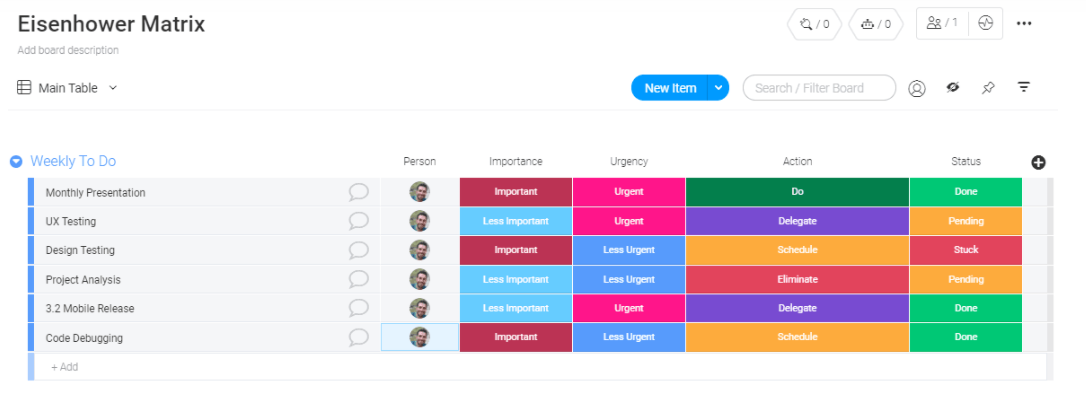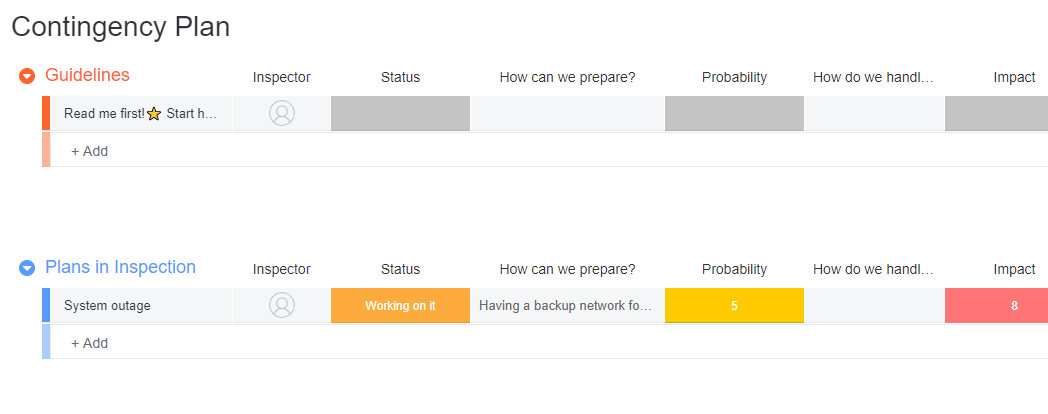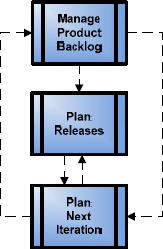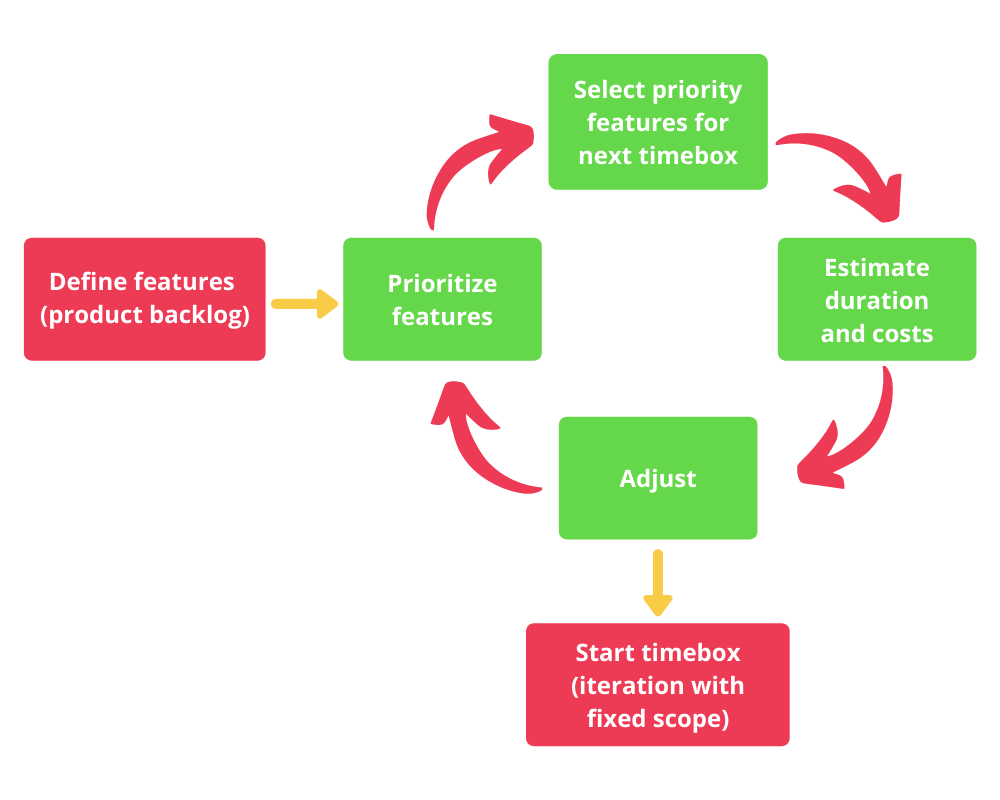Project planning isn’t always an easy, straightforward process and balancing scope, timelines, and budgets with key stakeholders’ needs may feel daunting.
But with the right process, planning doesn’t have to be stressful. By the end of this article, you’ll learn a step-by-step process that makes project planning easier and maybe even fun.
Let’s start with the basics.
The 5 Project Management Phases
- PHASE 1: Project Initiation
- PHASE 2: Project Planning
- PHASE 3: Project Execution
- PHASE 3: Project Monitoring
- PHASE 4: Project Close-out
What is project planning?
Project planning is a strategy that lays out the objectives and scope for the project team, company, and stakeholders. Project planning is the second step in the project management life cycle:
During the project planning process, you want to identify:
- What you want to accomplish
- The completion date
- How much it will cost
- Who’s involved and for which steps and stages?
- Which steps you’ll take to ensure it’s a success
The project plan sets a clear roadmap of action to achieve your goals. It should cover every aspect of the project, from the scope to costs, task dependencies, communication, risk, quality, and even stakeholder engagement. Sometimes, it’s helpful to break all of these responsibilities for this project phase into smaller pieces.
What are some typical tasks within the project planning phase?
As we mentioned above, a project plan can help your team understand what’s required of them and when, help you get an idea of progress, and how long the process should take. During the project planning phase, you’ll:
- Decide on a budget
- Set a project schedule or timeline
- Identify resources and any roadblocks and plan for those scenarios
- Ensure required resources are available
- Define project objectives, roles, deadlines, responsibilities, and project milestones
The above tasks may, while potentially time-consuming initially, can help you save on resources later on throughout the process. But project planning doesn’t just provide a list of all project components—its benefits extend far beyond that.
Why is project planning an important part of the project management process?
With so many variables, no project manager can guarantee a project will run smoothly, but project planning can reduce chaos and uncertainty as much as possible. By understanding the risks and potential roadblocks before getting started, project managers and stakeholders can either avoid those bottlenecks or develop a plan for dealing with them.
For instance, if a project relies on a stakeholder to produce an asset but they miss the deadline, a project plan would outline how to proceed in those situations without losing progress.
Project planning—and by extension, the project plan—will become your baseline for measuring progress, allowing you to compare actual progress with the project plan so you can monitor team performance.
Though each team may approach project planning a little differently, there are a few resources project managers can use to make the most out of this phase.
What's the difference between Traditional vs. Agile project planning?
The difference between Traditional and Agile planning lies in how each methodology deals with chaos and uncertainty.
Let’s talk about some of those differences.
Traditional planning
Traditional planning is more fixed and rigorous. The execution phase begins after the project manager approves the plan and the team agrees on how to measure progress (typically against the project baseline). Any changes go through a change control process and require approval before anyone can move forward.
One downside to this approach is that if an aspect of the project changes, it can take time before the team can adapt to meet the new requirements.
In Traditional Planning, the client provides specifications for the project and only sees the final result. This may allow the client to focus on other priorities, but it can also cause discrepancies in the expected results leave them unhappy with the final results. Agile is one way to keep clients involved throughout the process.
Agile planning
The approach for Agile planning is much more flexible and involves the customer during the entire project life cycle. Agile helps teams adapt fast to necessary changes and keeps the momentum going.
At some point, any project may need some adjustments, so instead of restructuring teams, workflows, milestones, and the entire plan, Agile allows you to pivot direction in short iterations.
The team cycles through one iteration at a time, allowing the client to provide feedback and request changes throughout the process.
Now that you’re familiar with both approaches to project planning, it often helps to see how they would look in practice. Let’s take a closer look.
How to create a project plan using the traditional planning method
Whether you choose the Traditional or Agile route, make sure all tasks contribute to the end goal. Check out this breakdown of the Traditional method in project planning.
Step 1: Collect the project requirements
Before working on your project management plan, think about your key stakeholders. Consider the following questions:
- What do they want?
- What are they trying to accomplish with this project?
- How do they define success?
To avoid miscommunication or project misalignment, don’t assume the answers to the above questions—ask the stakeholders for their input in a kickoff meeting to have a better understanding of what this project should accomplish.
Step 2: Define your objectives
Now that you’ve confirmed what your stakeholders are looking for and received some insights, it’s time to define and prioritize your project objectives.
Create a list of all the things you want to achieve and prioritize them based on importance, urgency, effort (difficulty), and impact. Prioritization matrices, such as Eisenhower’s, can be helpful for this step. Here’s an example of the Eisenhower Matrix:
 Try our Eisenhower Matrix template!
Try our Eisenhower Matrix template!
Once you input your information, it’s onto step three.
Step 3: Define the project scope on a work level
There’s only one way to eat an elephant: one bite at a time. When it comes to achieve a goal—regardless of its size—chunking it down into small, individual steps often makes it feel more manageable.
After setting and prioritizing goals, identify the different tasks that make them up and create a clear project scope and roadmap of action. Using a robust project management software, you can easily set dependencies for each tasks and define which ones you and your team can tackle concurrently. Then, as you start your project, you can use the Work OS to track progress against your plan.
Step 4: Define your deliverables
Now that you’ve set goals and specific tasks, get clear on how to define success. In this stage, you’ll want to define your deliverables.
A project deliverable is the result you produce from completing a process or project. For instance, if you’re a marketing agency, a deliverable could be a website, a magazine ad, or a documented sales process.
No matter what kind of project you’re working on, you’ll need deliverables to show results or proof of success. What will those look like? Get as specific as you can. Recording and planning concrete deliverables makes it easy to track progress.
Step 5: Prepare the overall schedule and project budget
Now that you have goals, tasks, and deliverables, it’s time to design a project schedule. A project schedule will define who is working on what and each task’s completion date.
It’s also helpful to include all of the resources you need to complete each task. Recording all of this information in one place will help you uncover any potential adjustments you might need to make for other project stages.
Step 6: Set a communication plan
To get all team members on the same page, define which communication channels you’ll use throughout the project with a project communication plan. Many teams choose to communicate over several channels and in this case, it helps to have a way to manage and organize all of these channels.

Step 7: Design a contingency plan
Even the best planned projects have some risk. The next step in creating an effective project plan is to create a contingency plan. Essentially, it’s a plan for handling the unplanned.
When coming up with your contingency plan, it’s helpful to ask a few questions:
- What are the main risks for this project?
- How likely are they to occur?
- How can you minimize or eliminate them?
- How should you act in case of a “disaster”?

The Traditional approach to project planning has you collect all assets and information before starting the project. In Agile, you’ll take a different approach.
How to adapt the traditional planning process for Agile teams
Now that you understand the traditional approach to project planning, let’s see how you can adapt it for Agile projects.
Step 1: Preplanning
The Agile planning process starts with preplanning. In this stage, the team will collect any requirements for the roadmap and product backlog and create a high-level estimation of time for each iteration, team roles, and costs.
Based on this information, the team can create a rough estimate of the total project duration.
Step 2: Release planning
Next, the team starts planning releases. In the planning phase, you can define whether you’ll release iterations as they’re completed or multiple iterations at once during specific periods.

You’ll focus on breaking down the product backlog into an estimated number of iterations and assigning them plan releases. Based on the release plan, the team can identify when the final product might be completed.
Step 3: Iteration planning
Agile is all about iterations. Instead of focusing on planning the project as a whole, Agile teams focus on planning only the next iteration. After each iteration, your team will gather and review how things went and define the scope — sprint backlog — of the next iteration.
This can be done following the process below:

Step 4: Manage product backlog
After each iteration, the project team reviews and updates the product backlog based on their outcomes, findings, and client feedback.
You can add new features and bugs, further elaborate on requirements, and shift priorities. Now’s the time to update your overall plan to reflect new information.
Step 5: Back to iteration planning
Now the cycle continues. Once you’ve updated your product backlog, you’ll launch into the next sprint or iteration planning stage. This process continues until you deliver the final iteration and product to your customer.
Then all that’s left to plan is the celebration.
Whether you choose the Traditional or Agile route, you’ll need the right tools to successfully complete any project. No matter which stage in the project life cycle, a Work OS—such as monday.com—will help foster clear communication between all stakeholders, track project progress, show who is responsible for what, keep all documents in one central place, and much more.
Start your project planning with monday.com
As the project plans is a roadmap of how you’ll achieve your goals, it’s an essential part of the project life cycle process. Thorough project plans usually include every part of the project including project scope, cost breakdown, resource breakdown, project assumptions, risk, and stakeholder engagement.
And as we covered above, whether you choose Agile or traditional methodologies, a solid plan will strengthen your project management efforts and save you a lot of wasted time.
monday.com Work OS can help you implement any process easily so you always have a clear idea of where your project stands. Don’t leave your success up to chance. Ensure your project planning strategy is a success with the help of monday.com.
 Get started
Get started 
